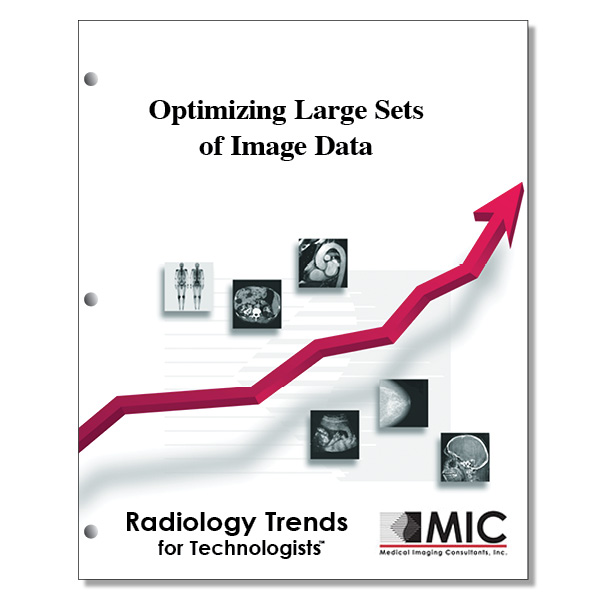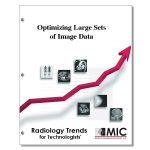

Optimizing Large Sets of Image Data
A presentation of technologies and tools to improve medical image analysis, visualization and navigation through large data sets.
Course ID: Q00323 Category: Radiology Trends for Technologists Modalities: Cardiac Interventional, CT, Mammography, MRI, Nuclear Cardiology, Nuclear Medicine, PET, Radiation Therapy, Radiography, Sonography, Vascular Interventional2.5 |
Satisfaction Guarantee |
$29.00
- Targeted CE
- Outline
- Objectives
Targeted CE per ARRT’s Discipline, Category, and Subcategory classification:
[Note: Discipline-specific Targeted CE credits may be less than the total Category A credits approved for this course.]
Computed Tomography: 0.50
Image Production: 0.50
Image Formation: 0.50
Mammography: 0.50
Image Production: 0.50
Image Acquisition and Quality Assurance: 0.50
Magnetic Resonance Imaging: 0.50
Image Production: 0.50
Sequence Parameters and Options: 0.50
Nuclear Medicine Technology: 0.50
Image Production: 0.50
Instrumentation: 0.50
Registered Radiologist Assistant: 2.50
Procedures: 2.50
Abdominal Section: 0.75
Thoracic Section: 0.75
Musculoskeletal and Endocrine Sections: 0.50
Neurological, Vascular, and Lymphatic Sections: 0.50
Outline
- Introduction
- Historical Overview
- Analog Era
- Early Digital Era
- Current Era
- Radiologists’ Visual and Interpretative Tasks
- Detection and Localization
- Change Assessment
- Target Characterization
- Communicating Results
- Image-guided Interventions
- Use of Advanced Technologies to Aid Radiologists
- Visualization Tools that Facilitate Data Reduction
- Advanced Postprocessing Workflow and Hanging Protocols
- Tools that Facilitate Navigation through Large Numbers of Images
- Technology Tools that Speed Image Rendering
- Tools that Facilitate Distribution of Images and Reports to Referring Physicians
- Tools to Transform Modern Image Management
- Conclusions
Objectives
Upon completion of this course, students will:
- be familiar with the imaging modalities that are providing large data sets
- be familiar with the processes involved with image interpretation
- identify the variables used for analog image exposure techniques
- identify processes used for overcoming the wide dynamic range of digital images in order to print them on film
- identify the need for an image viewing paradigm shift
- identify the parameter that allows true 3D volume production
- be familiar with the properties of isotropic voxels
- be familiar with the viewing options available for interpretation of image studies
- identify challenges for study interpretation using current methods of acquisition
- be familiar with the individual tasks involved in image interpretation
- identify error potential for interpretive tasks
- be familiar with error rates for interpretive tasks
- understand standards of quantifying target visibility during interpretation
- be familiar with signal to noise threshold for target detection
- understand computer aided detection (CAD) and its usefulness
- be familiar with error rates for CAD during target detection
- identify criteria used for change assessment during interpretaion
- be familiar with technologies that can be applied to improve change assessment
- be familiar with the individual tasks involved in image interpretation
- know the individual tasks involved in image interpretation
- be familiar with data quantities required for different parts of the image data set
- name the national and professional organizations working to overcome issues dealing with large data sets
- identify the tool used to restore the gestalt exam view during interpretation
- be familiar with stereoscopy principles used for image viewing
- understand the technology used for head and eye tracking during image viewing
- identify the minimum computing power needed to produce 3D renderings
- explain the methods for easily viewing many thin section slabs of rendered data
- identify uses for curved planar reformations
- be familiar with the principles of 3D image viewing
- be familiar with the principles of fusion imaging
- identify disadvantages of using historic image viewing and navigation tools
- identify alternative tools for image viewing and navigation
- understand the advantages of using improved interpretation and data distribution processes
- identify current innovations in data distribution
- be familiar with data identified as non-imaging clinical information
